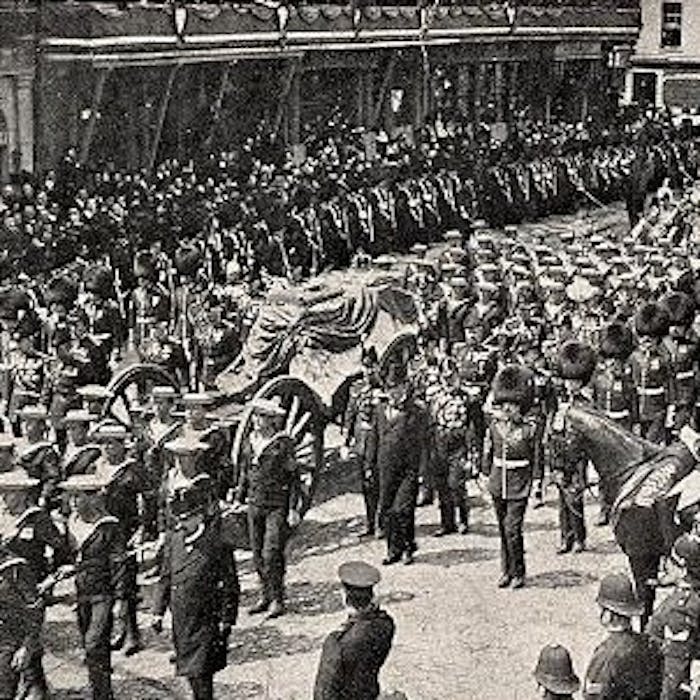
Royal Funerals - from a pattern set by Queen Victoria
The funeral of Queen Elizabeth II largely follows a pattern set by her more recent ancestors, from Queen Victoria to her own father.
The funeral of the British monarch has been, since the twentieth century, a mix of innovation and tradition. Of primary concern is the preservation of the monarchy’s popularity and relevance, and to maintain the love of the people. Public service and the monarch’s ability to represent the whole nation have become the main themes.
Since the 18th century, all British monarchs have been buried at Windsor and for a long period, funeral ceremonies took place within Windsor Castle.
When Queen Victoria died in 1901, her funeral reflected a growing effort to make the monarchy more public. This was to encourage greater popular attachment towards the royal family in a society which was becoming more democratic – and potentially more critical of an ancient and privileged institution.
As it happened, Queen Victoria died at her home on the Isle of Wight - which resulted in a procession through London from Waterloo Station to Paddington Station (to then continue by train to Windsor). This allowed the public to participate in proceedings, as they lined the procession route. Public processions have remained central to later funerals of monarchs, though now focused around Westminster.
Victoria had also stipulated that she wished to be buried "as a soldier's daughter". This introduced a strong military element to the funeral rites, which continues to this day.
Following the deaths of Victoria’s successors, further measures were taken to involve the public.
When Edward VII died in London in 1910, a public lying in state at Westminster Hall was introduced. Nearly 300,000 members of the public paid their respects by filing past the coffin.
For George V’s funeral in 1936, his lying in state was attended by over 750,000 people. Radio broadcasts created a vast new audience for the public ceremonies.
In 1952, the memorial services and funeral procession in London of King George VI became the first royal events to be broadcast by television as well as radio.
Further reading
Links to external websites are not maintained by Bite Sized Britain. They are provided to give users access to additional information. Bite Sized Britain is not responsible for the content of these external websites.
